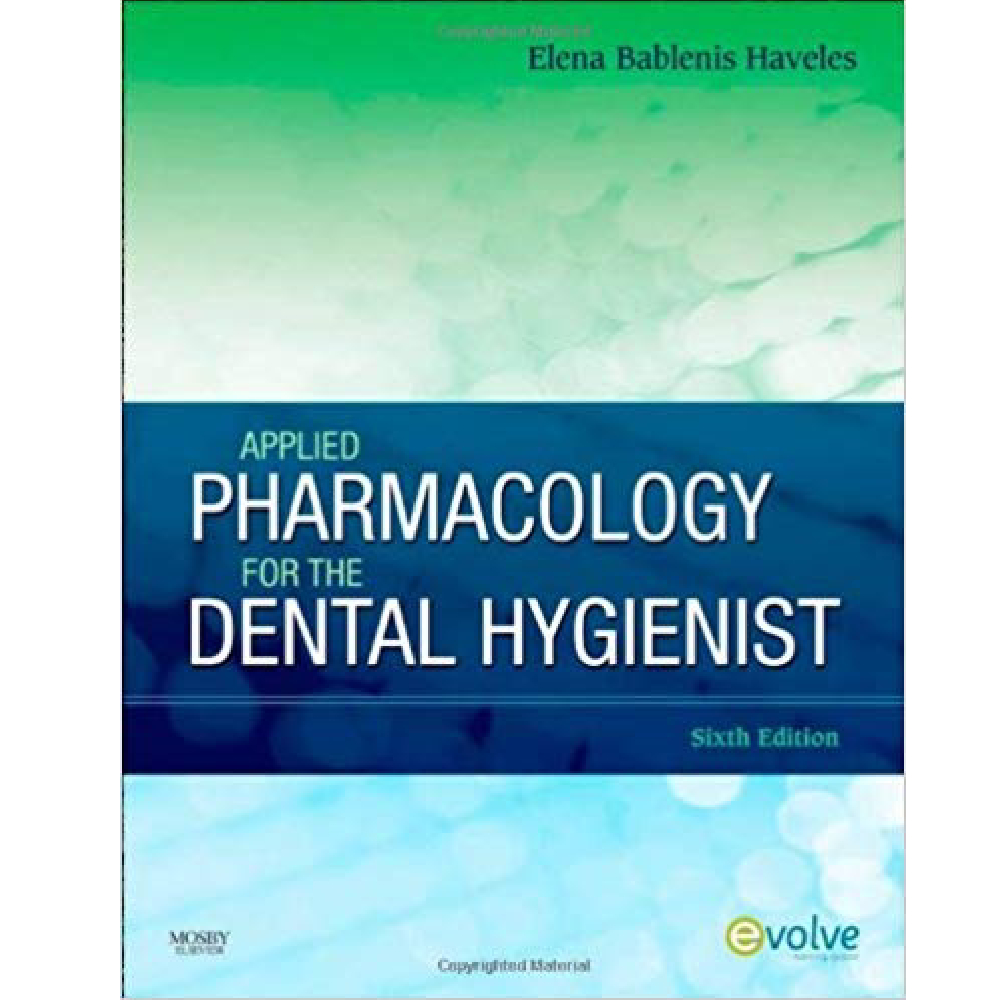Applied Pharmacology For The Dental Hygienist 6th Edition By Elena – Test Bank
$55.00
Applied Pharmacology For The Dental Hygienist 6th Edition By Elena – Test Bank
You will receive this product within 24 hours after placing the order
Applied Pharmacology For The Dental Hygienist 6th Edition By Elena – Test Bank
Chapter 11: Antianxiety Agents
Test Bank
MULTIPLE CHOICE
1. Antianxiety agents are most commonly orally administered because the effective dose of a particular antianxiety agent is very predictable.
a. Both parts of the statement are true.
b. Both parts of the statement are false.
c. The first part of the statement is true, the second part is false.
d. The first part of the statement is false, the second part is true.
ANS: c
Correct: Orally administered drugs are most commonly used to provide relaxation for the anxious patient because intravenous (IV) dosing requires more training and experience than most general dentists possess. However, the dose of a particular antianxiety agent effective for a particular patient is vastly variable, involving both intrapatient and interpatient variation.
REF: p. 137
2. Which of the following agents are the most commonly prescribed antianxiety drugs?
a. Nonbenzodiazepine-nonbarbiturate sedative-hypnotics
b. Nonbenzodiazepine-nonbarbiturate receptor agonists
c. Benzodiazepines
d. Barbiturates
ANS: c
The benzodiazepines are the most commonly prescribed antianxiety drugs. The members of this group differ mainly in their onset and duration of action, dose, and dose forms available.
REF: p. 137
3. Which benzodiazepine would be most suitable for intramuscular administration?
a. Midazolam
b. Diazepam
c. Alprazolam
d. Flurazepam
ANS: a
For benzodiazepines other than midazolam, the intramuscular route gives slow, erratic, and unpredictable results.
REF: p. 138
4. Once a benzodiazepine is absorbed, the rate at which it reaches its site of action is dependent on:
a. Lipid solubility
b. Protein binding
c. Ionization
d. All of the above
e. None of the above
ANS: d
Once a benzodiazepine is absorbed, the rate at which it crosses into the cerebrospinal fluid through the blood-brain barrier is dependent on protein binding, lipid solubility, and the ionization constant of the compound.
REF: p. 138
5. Which benzodiazepine is preferred for use in elderly patients?
a. Diazepam
b. Lorazepam
c. Midazolam
d. Clonazepam
ANS: b
Benzodiazepines such as lorazepam, oxazepam, and temazepam do not require phase I metabolism to become inactivated in the body. The efficiency of phase I drug metabolism can sometimes be compromised in elderly adults. Phase II drug metabolism (conjugation) is less affected by age than phase I drug metabolism.
REF: pp. 138-139
6. Some benzodiazepines are transformed in the body to active metabolites. The active metabolites are formed by phase II drug metabolism.
a. Both statements are true.
b. Both statements are false.
c. The first statement is true, the second statement is false.
d. The first statement is false, the second statement is true.
ANS: c
Correct: Phase I drug metabolism transforms some benzodiazepines to active metabolites.
REF: p. 138
7. Benzodiazepines enhance or facilitate the action of the neurotransmitter:
a. Acetylcholine
b. Epinephrine
c. γ-Aminobutyric acid (GABA)
d. Serotonin
ANS: c
Benzodiazepines enhance or facilitate the action of the neurotransmitter GABA, a major inhibitory transmitter in the central nervous system (CNS). It acts in the limbic, thalamic, cortical, and hypothalamic levels of the CNS. Benzodiazepines act as agonists at the benzodiazepine receptor site, thereby reducing the symptoms of anxiety.
REF: p. 139
8. The clinical effects of benzodiazepines in humans are __________ at lower doses.
a. Drowsiness and sleep
b. Drowsiness and anxiety reduction
c. Anxiety reduction and panic reduction
d. Anxiety reduction and sleep
ANS: c
The clinical effects of benzodiazepines in humans are anxiety and panic reduction at lower doses and production of drowsiness and sleep at higher doses. Repeated doses of benzodiazepines reduce rapid-eye-movement sleep. Usual doses produce a marked reduction in stages 3 and 4 sleep (deep sleep), which, after long-term use, can interfere with restorative sleep.
REF: p. 139
9. Benzodiazepines are indicated for epilepsy because they:
a. Reduce the electrical activity in the seizure focus
b. Limit the spread of abnormal activity to other parts of the brain
c. None of the above
d. All of the above
ANS: b
The benzodiazepines prevent the spread of abnormal electrical activity to tissues surrounding the anatomic seizure focus (when such a focus exists) but have little effect on the discharges at the focus itself.
REF: p. 139
10. When benzodiazepines are used in dentistry to produce conscious sedation, the appearance of __________ is used as an initial endpoint for the dose administered.
a. Flushed skin
b. Miosis
c. Ptosis
d. Rapid eye movement
ANS: c
The appearance of ptosis is used as an initial endpoint for the dose administered. When benzodiazepines are used in dentistry to produce conscious sedation, this side effect of CNS depression is used as the primary effect. The amount of the benzodiazepine used to provide conscious sedation is titrated to the patient’s response.
REF: p. 139











Reviews
There are no reviews yet.